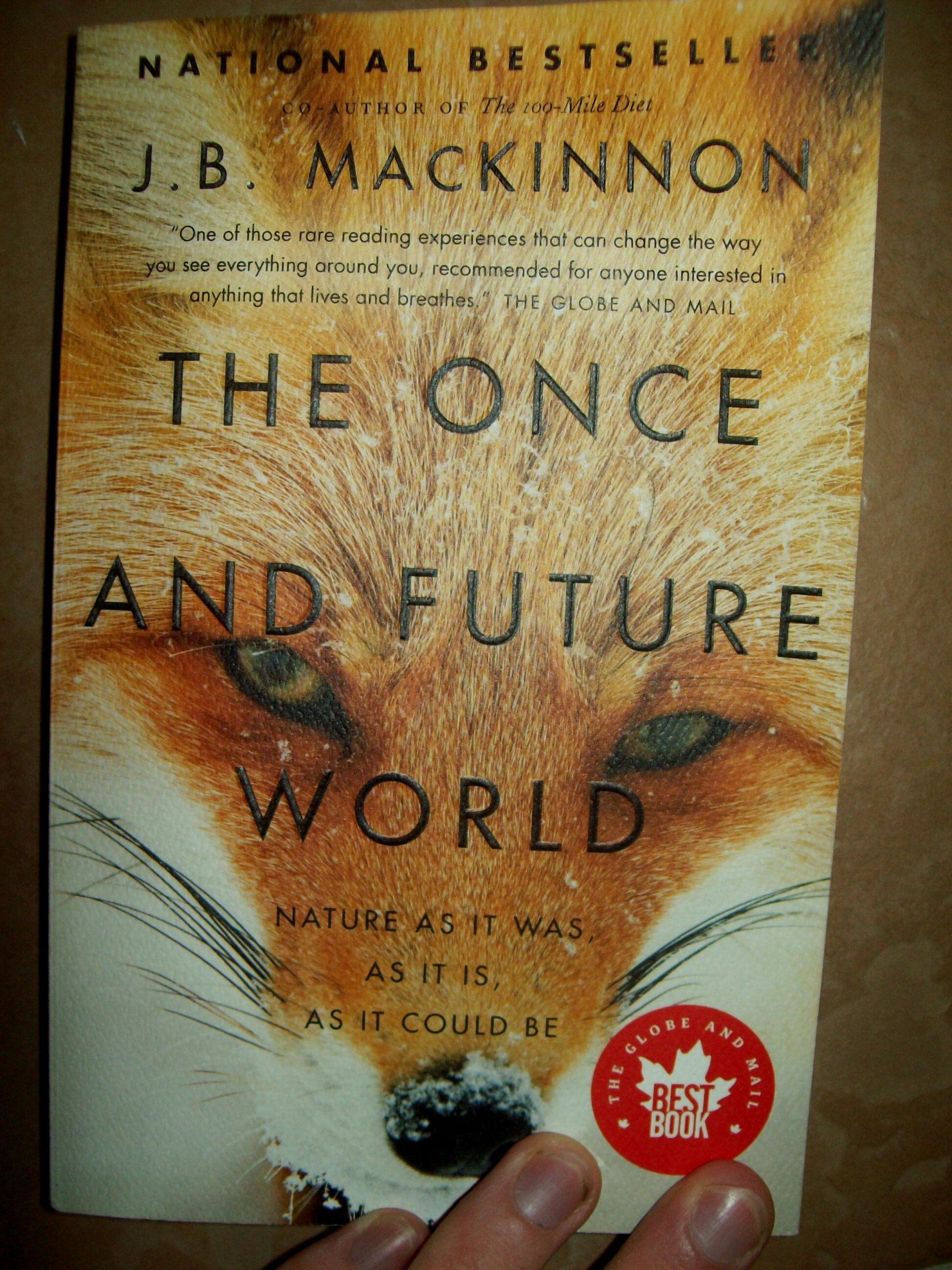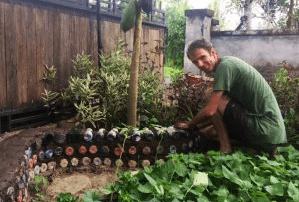Tis the Year of the Fox… for me!
The car in the lane beside us suddenly slowed down. Like a silver ghost, it crossed our path fearless winding between the cars with an elegant, unhurried and fluid stride. On the other side of the road it turned back and looked at us before slipping away into the night.
Last night, my Mum and I were on our way to meet my brother and sister for a new year’s party when a fox crossed the road right in front of us. In almost two decades living in the area (what was once riverside forest but now suburbia) I’ve never seen a fox– only heared rumours that they might still be around. Crossing paths was on New Years eve with a fox was special. Yet, given that the book I am reading has a fox on the cover, it was decidedly auspicious. According to my grandmother, my name “Russell” (which is also my grandfather’s) derives an old English term for red fox.
“The Once and Future World” was a Christmas present from my sister’s mother-law Janet. I was overwhelmed with the feeling that this would be a special read when I first opened it.
“The fiercest animal of the prairie, and therefore my boyhood symbol of nature was the red fox” writes J.B. McKinnon “The sporty, lollying, yipping red fox. It’s an extraordinatry animal. An adult red fox is able to run at seventy kilometres an hour. They’ve been observed trying to race airplanes down runways… when hunting a fox can leap eight metres and land with enough precision to pin a mouse beneath its forepaws, meaning that at take off the fox has accounted for its own speed and trajectory of the mouse, along with other factors such as wind and ground cover, all without ever actually seeing the prey. Such a pounce is so carefully controlled that a fox will at times beat its tail to one side or the other in mid air to adjust its flight path.”
The author goes on to describe how in the times before the contact of man, the wildness thrived with incredible abundance. He describes how this abundance was indelibly tied to the variety of biodiversity and the presence of animals. Indeed, the animals, predators in particular, actually seeded the conditions for their prey and the rest of the ecology to thrive. He shows how by investigating the history of an ecology we can be reminded how it once was (because it is so easy for us humans to forget and get used to the status quo) and most importantly… be inspired to imagine just how abundant it could be again! He paints a vision of how by consciously recrafting biodiversity and fauna we can regenerate the desolate ecologies of today. This vision is directly in line with our vision of Ecobrick food forest play parks– the idea of building intense green spaces with their own self sustaining ecology. The book is just what I need to be reading as it affirms and indeed takes our vision to a whole new level.
Typically I love wolves, but this year I will joyfully embrace the spirit of the fox: Elegant, calm, focused and fluid manifestation of intention. Oh… and foxes are natural home builders making their organic warrens from earth! Perfect.


